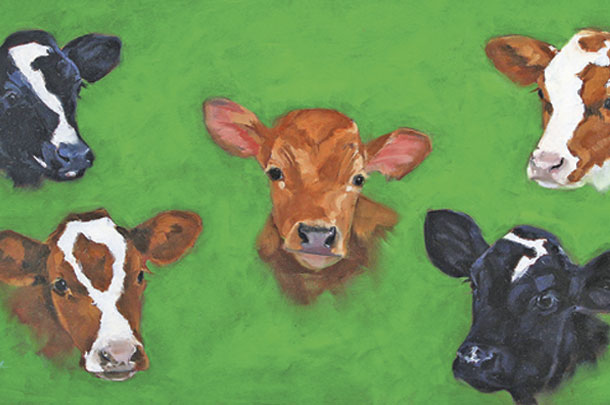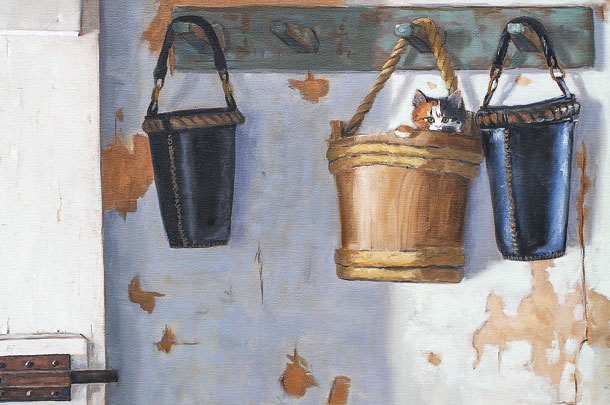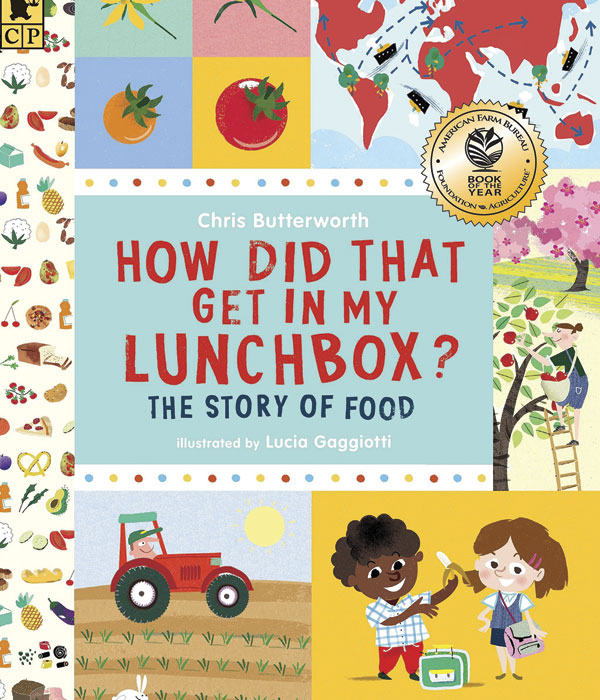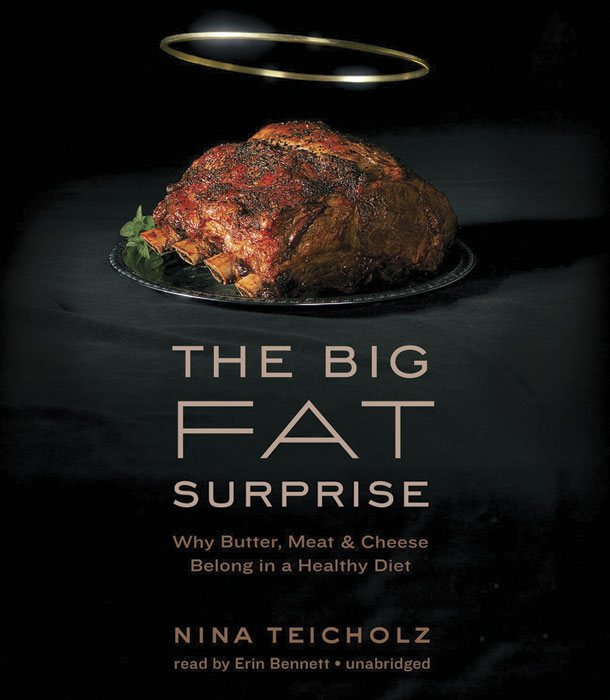Jan and Richard Stommes are looking to change that. Between Richard’s knowledge and experiences from growing up on a dairy farm in central Minnesota and Jan’s artistic ability and editing skills, this couple produces delightful children’s books detailing the adventures of calves living on a dairy farm.
Growing up in the Twin Cities, Jan loved the idea of working with animals. Although she found she suffered from too many allergies to pursue her dream of being a veterinarian, Jan still chose to obtain a degree in animal science, where she met Richard Stommes as an undergraduate.
During the time when Jan continued on to receive her degree in reproductive physiology in the ag science program, Richard went on to study dairy nutrition in graduate school. Now living in central Wisconsin, Rich is a co-owner of Midwest Nutrition & Feed, and Jan is producing paintings both for her books and the various fine art societies she is involved with.
Through a client of Richard’s, the Stommes learned there had been many negative comments made about the dairy industry by those who are unaware of what dairy farming is all about, and of the hardworking families these comments may affect. Unfortunately, many farms today are being forced to sell due to many factors, including the negative effects of these misconceptions. Rich’s client knew Jan had written other children’s books and suggested the idea of writing her next one about the positive aspects of life on a farm.
With Jan having grown up in the Twin Cities, she asked Richard to write the stories, and she would later edit them to make the stories more suited to children. Based on their own property, which the Stommes lovingly refer to as “The Land,” Jan and Rich began to write their own children’s series to bring light to an industry that is often portrayed negatively in today’s society and media.
With the mission to create a story that would positively portray dairy farming, they created The Baby Calves Adventure series. The series currently consists of two books, titled Blaze & Black Tips and Brown Spot & Seven, with a third book in the works.

Each book follows a pair of calves that sneak out of their cozy home in the barn to explore the land around the farm. On their adventures, the calves meet new friends and learn about life outside of their pens. Each baby calf book the Stommes write focuses largely on the differences between the lives of wildlife surrounding the farm and the “excellent care that dairy farmers give to their livestock.”
Not only do the calves go on various adventures around the land, but they are always happy to return home to their pens, where they are well taken care of by the kind farmer. It is clear while reading these stories the Stommes have a strong love for nature and a deep appreciation for the individuals who dedicate their lives to the labors of farming.
Looking at each of these books, you may notice the beautiful hand-painted illustrations that decorate each page. Besides editing each story, Jan also uses her paintings to further bring the adventures of the young calves to life. The books each include photos that had already been painted as well as some Jan created specifically for the series.
For example, the painting “Wisconsin’s Best” was originally created for a series Jan did for Wild Wings publishing house, some of which are still for sale on their website. This painting was then used in the baby calves series to emphasize the delicious food produced from a cow’s milk. Being a member of the International Guild of Realism, Oil Painters of America, The Society of Animal Artists and the American Impressionists Society, Jan has her hands quite full with fine art deadlines, so finishing each book has become an ongoing process for the couple.
The Baby Calves Adventure series are not the only books Jan and Richard have written. Jan’s other children’s stories focus mainly on science and learning coping skills for dyslexia and dyscalculia, and Rich has written another book titled The Science and Art of Grazing Dairy Cattle. Like The Baby Calves Adventure series, this book is also illustrated with Jan’s own paintings, with recipes of her creation located at the end of each chapter.

Through their hard work and dedication to bringing positive attention to the dairy industry, Jan and Richard Stommes have done an excellent job in constructing a series both educational and accessible to children. From undergraduate studies in ag science to writing their own stories on science and ag education, the Stommes have truly established something special in their work. Jan’s artwork, as well as the books created by Richard and herself, can be found online (Jan Stommes Fine Art).
With so much negativity surrounding a community of hardworking, caring individuals, these books created by Jan and Richard Stommes shine a light on the true nature of the dairy industry through the adventures of a few adorable calves. ![]()
PHOTO 1: Jan and Richard Stommes, pictured here holding their grandson Joey, are combining their passions, talents and experiences to tell positive stories about dairy farming through a series of children’s books. Photo provided by Jan Stommes.
PHOTO 2: The Baby Calves Adventure series follows the interaction of young dairy calves with nature. This painting, titled “Next Generation,” depicts some of the calves featured in the books.
PHOTO 3: Jan Stommes’ artwork decorates the pages of the book series, including this image called “Where’s the milk?”. Images provided by Jan Stommes.
Callista Van De Hei is an English student at University of Wisconsin – Green Bay.
3 more books for educating kids and adults about cows and dairy
Looking for other go-to books to educate others on dairy? Here are a few more ideas that appeal to a range of ages:
How Did That Get In My Lunchbox? The Story of Food
By Chris Butterworth
Submitted by Angela Tauer, Tauer Dairy
Hanska, Minnesota
As a children’s librarian in a small rural library, as well as a mom, consumer, industry advocate and dairy farmer myself, I often have challenges finding agriculture books that are not only factual and accurate but creative and engaging as well. So many hold implicit biases, are long outdated, full of misconstrued facts or simply not appealing to the eye.
This is why I love the book How Did That Get In My Lunchbox? The Story of Food. The picture book is geared for children 8 and under but is suitable for all ages. The story, as it moves along, covers how items in a typical day-to-day lunch box are made by farmers. Everything from the bread base to the cheese that makes the sandwich taste great, right down to the juice in the juice box.

The descriptions are a fair and accurate portrayal of modern and safe agricultural practices, reassuring consumers of all ages food is not only safely grown utilizing current best practices but also with care and integrity. Even as farm kids themselves, my own children were fascinated and learned a few new things.
In addition, the illustrations created by Lucia Gaggioti highlight and leave a meaningful impact on the reader. They’re cute while being realistic. The artwork covers all genres of farmers and leaves no mention of the usual stereotypes found in other books. Kids of all backgrounds can find someone to relate to in the story which, in turn, ensures they will have long-standing healthy relationships with food and the people who grow it.
I am not the only one fond of this book, as it has won awards from within our own industry; the greatest of which is earning the Farm Bureau Seal of Approval, citing it as “Book of the Year” starting in 2012.
How Did That Get In My Lunchbox? The Story of Food has become an integral part of my storytime sessions because of its smooth cadence and natural rhythm. The story flows while weaving an amazing, timeless tale of agriculture. It’s slow and steady without bogging down in needless details. It reads like a timeless children’s classic while interweaving relatable non-fiction facts.
Children’s books with quality agricultural content are often hard to find and struggle to make mainstream print. So if there’s one out there that’s factual, accurate, fun and this well done, let’s share, share, share.
The Best Ice Cream That Ever Was Licked
By Rebecca Lyons
Submitted by Sam Schwoeppe
Schwoeppe Dairy LLC
Huntingburg, Indiana
The Best Ice Cream That Ever Was Licked is the story of a young girl’s dream come true. Ironically, I met the author of this book during a book signing at Moore Family Farms Cheese Shop, the retail outlet of one of the most creatively entrepreneurial people I have ever met, Heather Moore. The author of the book, Rebecca Lyons, grew up on a dairy farm in Iowa, is a graduate student at Iowa State University and has started her own award-winning “farm to foot” business, Lunchsox. Every sock purchase supports her hometown backpack program, which helps to provide meals to hungry kids.
The book takes us back to our childhoods and reminds us of that long-awaited and oft-hoped-for present of a special heifer calf of our very own. Becca loves working on her parents’ dairy farm, and loved the big black-and-white Holstein cows, but her heart’s desire was to have a brown calf all her own. Her father surprised her with an early Christmas gift of not one brown calf but two brown cows that quickly multiplied into a herd which became the “milk-makers of the very tastiest, super creamiest, most scrumptious, extra yummiest, best ice cream that ever was licked!”
As the herd grew, so did Becca. She learned to keep records of the expenses of raising her cow family, and she even kept records of how much money she was making selling their milk. Many years after receiving the gift of two brown cows, Becca went off to college to study agriculture where she “took lots of classes that taught her to be a great entrepreneur; someone who creatively operates their own business.”
Becca’s business idea was to have an ice cream shop on her family farm that would serve ice cream made from her cow family’s milk, and “That ice cream would be the very tastiest, super creamiest, most scrumptious, extra yummiest, best ice cream that ever was licked!” This book tells a wonderful story of a young girl with dreams who worked hard to make them come true. It is a fantastic book to take along when you are speaking to groups of children. Sometimes young people are shy and slow to ask questions, and the very best part of visiting a classroom is a lively discussion. My favorite part of the book is the discussion prompts at the end:
1. If you were going to start your own business, what would it be?
2. Who would help you run your business? How would they help you?
3. What are some costs that your business would have?
4. Where would your business be located?
5. Who would your customers be?
BONUS: If you invented a flavor of ice cream, what would it be?
The Big Fat Surprise
By Nina Teicholz
Submitted by Krista Stauffer
Stauffer Dairy, Addy, Washington

I just recently started reading The Big Fat Surprise. I heard Nina Teicholz speak a couple years ago at the NMPF annual meeting. To be honest, I was totally overwhelmed with the information she was providing. She was explaining why the diets pushing folks away from saturated fats such as dairy and meat are unhealthy. I was so excited, I went out and bought her book as soon as I got home.
It’s a big book with a lot of information, and reading books is like pulling teeth for me, so naturally it would take me a couple years to open it. I may not have finished the book yet, but from what I have read so far, I know it is a game-changer in a world that says consuming dairy products and meats are bad for you.
Every day a new article, social media post, book or documentary comes out saying to remove dairy and meats from your diet. As farmers, we need to speak out and make sure the truth is being told. The truth is: Dairy does belong in a balanced diet, for a number of reasons. This book breaks it down in ways that are easy to understand as well as providing the sources to back up the information. This is a must-read for all dairy farmers as well as a great gift idea for the skeptic in your life. ![]()



